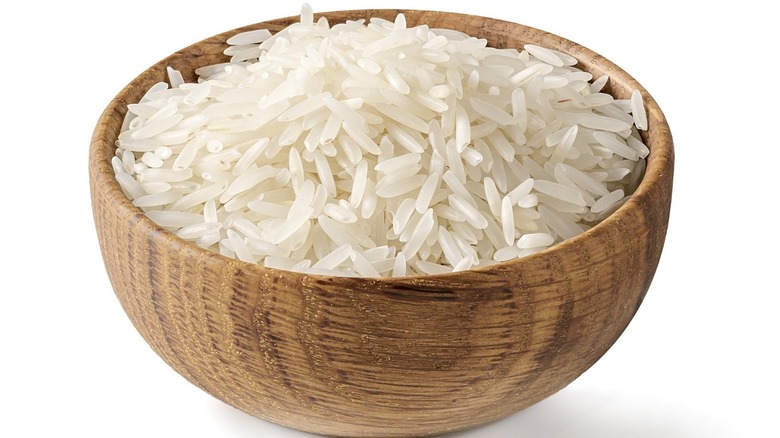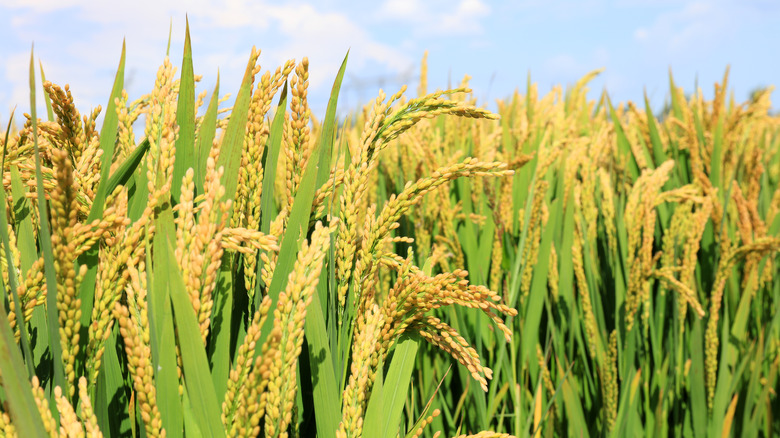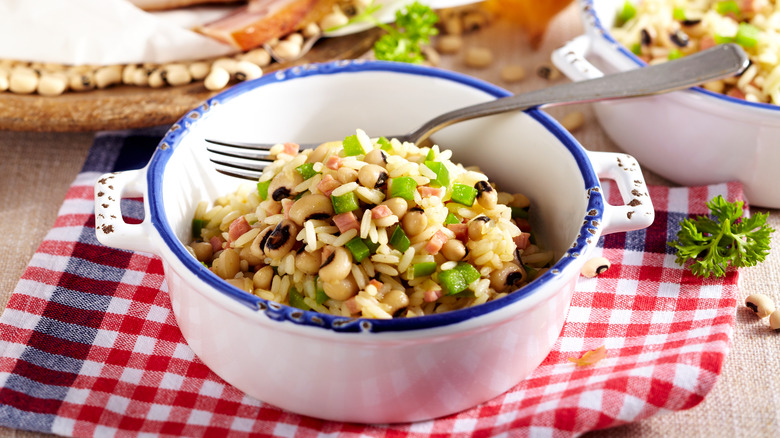What Makes Carolina Gold Rice So Unique
Along with so many ways to cook rice, American cuisine is full of varietals you might be familiar with: jasmine, basmati, arborio, red aromatic, and black Japonica (via USA Rice). But the list is incomplete, as it is missing one type of rice that was very nearly wiped out after the Civil War.
The history of Carolina gold is inexorably tied to the history of the American South itself. While the Charleston County Public Library says the origins of this type of rice are murky, Coastal Heritage Magazine says there is evidence that both the grain itself — and the techniques used to grow it — came from West Africa. According to the magazine, by close to the mid 18th century, plantation owners in the Carolinas were calling for slave traders to target people from the African Rice Coast for enslaved labor. James Madison University professor Joseph Opala explains that's because "rice growing was a particularly complex form of agriculture, and that's why planters needed people from that part of Africa." It was these enslaved workers and their expertise in growing Carolina Gold that made the region's plantation owners wealthy, and Charleston became one of the wealthiest cities on the continent at that time.
The rice nearly disappeared from America's food culture
Rice culture in South Carolina's Lowcountry met its end after the Civil War, due in part to the Emancipation and to forces of nature that brought hurricanes and river currents which brought silt down from cotton farms located upstream (via The New York Times). The last commercial crop of Carolina Gold was harvested in 1927, but it was already rare and mostly unheard of even then. It was only because of Dr. Richard Schulze's curiosity that the seed was eventually replanted.
Dr. Schulze, who was an eye surgeon, owned a 400-acre plantation in an area southwest of Charleston with his wife Patricia, and he became interested in the rice he had only read about. Schulze managed to procure 14 pounds of seed from the United States Department of Agriculture Rice Institute, and by 1988 he had managed to harvest 10,000 pounds of Carolina Gold. The doctor then donated his harvest to the Savannah Association for the Blind, with its proceeds used to keep the organization afloat. Schulze's successful efforts enticed food scientists at South Carolina's Clemson University to cultivate a more sturdy hybrid that we see today (via Serious Eats).
Carolina Gold is more nutritious than regular rice
With its comeback, the rice has been able to figure prominently in Gullah Geechee cooking, or the cooking tradition brought over from West Africa that informs a lot of Southern comfort foods (via Southern Cast Iron). It is also touted as a super grain that is more nutritious than the normal white rice we find at supermarkets around the country.
As National Geographic Explorer and author Dan Buettner explained to Today, "If you're eating a bowl of white rice, it's probably not the best idea. Carolina Gold rice, it's different. It's a different species from ... Asian rice. It's got a little gold hue to it. It's got a nuttier flavor. And it usually has some germ left in it, and that's where a lot of the nutrients are." South Carolina cooks in the know now use Carolina Gold to make Hoppin' John, a rice dish served as a good luck wish on both New Year's Eve and New Year's Day.
Buettner, whose latest book examines "Blue Zones" where people live longer and eat healthier, says Carolina Gold is similar to the types of food eaten in those areas. The author said, "[The people in 'Blue Zones'] don't have any superfoods. There's not any magical pill or supplement you're going to take. They were essentially eating whole food, plant-based. The key to a healthy America is giving them delicious, plant-based recipes that they can cook and they can afford."


